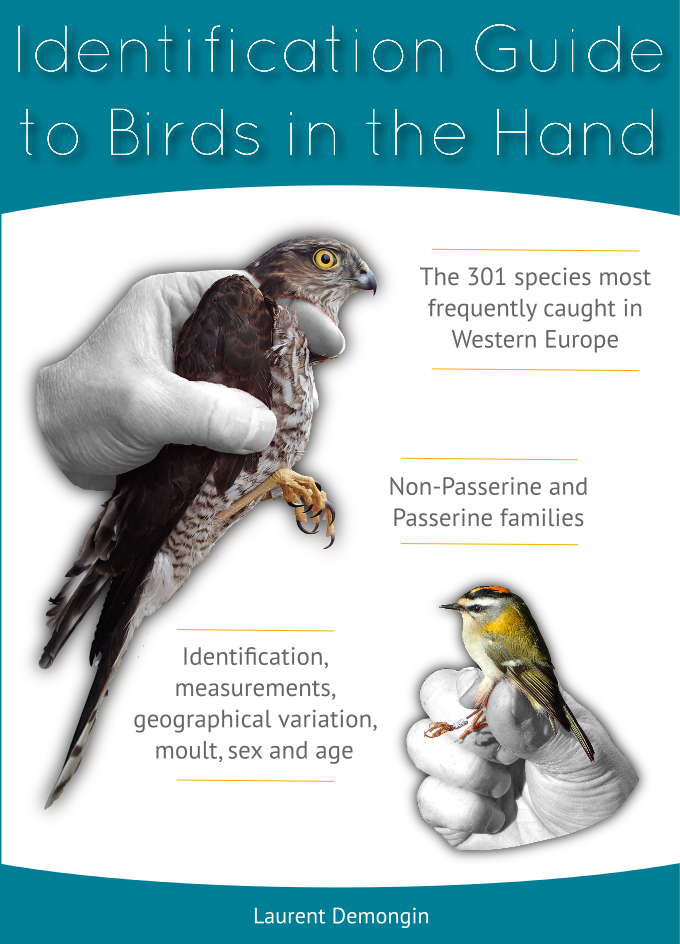Identification Guide to Birds in the Hand
OUT OF PRINT - English version no longer available
The identification guide for ringers - in English
This guide aims to give to all ringers and ornithologists who handle birds the essential information regarding accurate identification of species and subspecies, measurements, moult, sex and age.
The 301 species (154 non-passerines and 147 passerines) most frequently caught in Western Europe by general ringers are presented in detail. To avoid mistakes, identification is systematically compared with species of similar appearance, which represents a total of more than 550 treated species.
This English version of Guide d'Identification des Oiseaux en Main, updated with 51 extra species, gives all ornithologists who handle birds the essential information regarding accurate identification of species and subspecies, measurements, moult, sex and age. Homogenous treatment of all species groups precludes the recurrent pitfalls of using various books with variable modes of presentation and means fewer books to carry in the field.
In English, published in 2016. Printed in France. Size 17 x 24 cm, 392 pages, black and white.
ISBN 978-2-9555019-0-0
Editor price: 35 euros + shipping costs.
Availability: Item out of stock
35.00€ inc. tax
33.18€ excl. tax
- Condition : new
